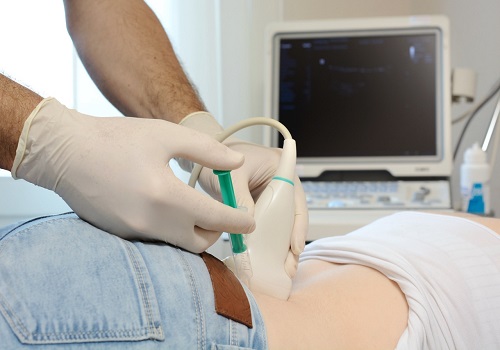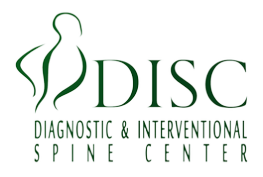Modern medicine relies heavily on accuracy when it comes to the production of diagnostics and treatments, more especially when it is someone with chronic conditions; for instance, backaches, joint inflammation, or pain involving the nerves. Such a scenario will depend much on delivering the medication to exactly where the effect is desired it is in such a situation that image-guided injections find their position to assist a doctor in performing treatment with minimal risk to the patient. In this essay, we will discuss what image-guided injections are, the benefits of this method, how the procedure works, and the people who stand to benefit from such advanced techniques.

Patient at the doctor or therapist receives ultrasound-guided injection
Image-Guided Injections: Learning More About the Benefits
Image-guided injections is a treatment in which real-time imaging technology assists physicians to guide a needle carefully into a targeted area of the body. Injections can be both diagnostic and therapeutic. It can be used to diagnose where a source of pain exists, or to administer medication, such as corticosteroid or anesthetic, to reduce pain and inflammation.
Among the most common forms of imaging technology include:
Ultrasound: Extremely common non-invasive imaging that creates real-time images of soft tissues, muscles, and joints.
Fluoroscopy: A type of X-ray producing live-moving images. Spinal injections often involve the use of fluoroscopy.
CT Scans: A highly detailed image-building process, particularly useful for complex joint or spinal procedures.
In fact, image guidance significantly enhances the precision of injections so that drugs are administered precisely to the targeted destination, thereby enhancing outcomes and minimizing complications and risks.
Benefits of Image-Guided Injections
Improved Accuracy
The first benefit of using an image guide is the precision one could obtain. Physicians see precisely where they are to target and can therefore put the needle into the precise spot needed. In the conditions of herniated disc, for example, the medicine has to be delivered close to nerves or joints.
Minimized Risk
In addition to this, doctors have the ability to avoid complications by being able to visually identify where they are attempting to inject in order to avoid nerves, blood vessels, or organs.
This level of control also results in minimal chances of missing the target area or administering medication in the wrong location.
Faster and More Effective Treatment
Since the medication will be administered directly on the problem area, most patients feel relief faster. There is faster recovery time because the body will heal sooner. In addition, there is less chance of requiring a redo since the affected area receives the correct impact the first time.
Less Invasive Approach
These injections are considered a less invasive procedure compared to the more conventional methods. They can be performed without requiring large incisions for most applications so that patients require less pain and recover faster. In most cases, this has become an excellent alternative to surgery, especially in pain management for chronic conditions.
Procedure Overview
A patient undergoing an image-guided injection may go through the following procedures;
Preparation:
The patient could be advised by the doctor to avoid some medications or even food items before the procedure. If he or she is going to be injected with this, there will be cleaning of the target area and an application of a local anesthetic to the skin.
Imaging Setup:
The doctor will use an adequate imaging technique: ultrasound, fluoroscopy, or CT scan, to visualize the affected area in real time. The imaging equipment will guide the needle to the very place the injection is needed.
Injection Procedure:
The needle will be injected once the imaging technology has confirmed the location. During this step, the doctor will instruct the patient to stay still or move to the correct position as need be for an effective degree. The correct area identified will be where the medication will be injected.
Post-Injection:
After the procedure, mild tenderness or soreness may occur at the injection site and most commonly subsides in a day or two. A patient usually can return to their normal daily activities shortly afterward; however, heavy use should be avoided for a short period of time.
Conditions Treated with Image-Guided Injections
Image-guided injections are done for the diagnosis and treatment of several conditions, mainly those causing chronic pain. Among the most common conditions include the following:
Arthritis: It refers to the inflammation of the joints. The patient may often experience severe pain and stiff muscles. Image-guided injections help to reduce inflammation in fighting off the symptoms caused.
Herniated Discs: The soft tissue between the spinal vertebrae bulging out and compressing nerves can lead to severe pain. Corticosteroids can be injected to decrease swelling and pain in the affected region by the precise injection.
Spinal Stenosis: It is narrowing of spaces in the spine that compresses the spinal cord or nerves. With image guidance, injections can be made to target the regions causing pain and provide considerable relief from pain.
Tendinitis: Inflammation of tendons, especially in the shoulder, elbow, or knee can be managed by image-guided injections to decrease swelling and pain.
Safety and Efficacy
Safety is a paramount concern when utilizing image-guided injections. The entire process of using the imaging technology reduces complications since the doctor can navigate around sensitive structures such as nerves and blood vessels adequately. In multiple numbers of documented studies, these procedures are highly efficient in providing relief from the Back pain for patients with chronic conditions and provide better improvements in the ability of the patient to move about freely along with good quality life.
Who Benefits from Image-Guided Injections?
Patients suffering from chronic pain who are not responding to conservative treatment, including physical therapy and oral medications, are ideal candidates for injections guided by images. These injections are very useful for patients with conditions such as arthritis, herniated disc, and tendinitis. People requiring surgery can also be effectively treated using image-guided injections, which significantly prevent invasive surgeries.
Case studies have shown that patients of various ages and backgrounds have benefited from the injections by reducing various joint discomfort and nerve-related pain. Whether it is a reduction in joint pain or remedy of nerve-related pain, these injections target exactly the area where the pain is being experienced and therefore make the tool significant in pain management.
Conclusion
In essence, image-guided injections are an extremely effective and safe method of pain and inflammation management in patients with a wide range of conditions. This is a new idea in the management of pain due to improved accuracy through reduced complications, be it in the diagnostic or therapeutic sense. In this regard, the patients are empowered to achieve quicker recovery times and better outcomes, hence becomes an essential option in modern healthcare.
